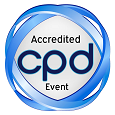
Athula B. Attygalle
Center for Mass Spectrometry, Stevens Institute of Technology, USA
Title: Charge-site location and structure elucidation of gaseous ions
Biography
Biography: Athula B. Attygalle
Abstract
The location of the charge site is an important prerequisite to interpret fragmentation spectra of ions. Although the challenge appears seemingly simple, in reality it is not at all a trivial problem. One often assumes that the charge location can be easily predicted by knowing the gas-phase acidity or basicity of various groups present in a polyfunctional molecule. However, in reality this a very challenging problem because generalizations valid for solution-based chemistry cannot be extended directly to rationalize gas-phase phenomena. For example, there is sufficient experimental evidence, particularly from ion mobility mass spectrometry, to demonstrate that deprotonated p-hydroxybenzoic acid could exist in gas phase as mixture of carboxylate and phenoxide forms. Analogously, protonated aniline exists as mixture of nitrogen- or ring-protonated forms. Sometimes, the incipient proton that imparts the charge to a molecule is mobile. For example, methyl dihydrocinnamate initially protonates on the carbonyl group. Then the charge ambulates to the phenyl ring before finally migrating to the methoxy oxygen atom to afford a subsequent loss of methanol. Analogoulsy, The charge-imparting proton migrates to the ring before a molecule of water is eliminated from protonated benzoic caid. Using many similar examples, the methods, which include ion-molecule reactions, H/D-exchange studies, ion-mobility spectroscopy, and isotope-labeling experiments, available to elucidate intricate ion-fragmentation pathways will be presented and discussed.

